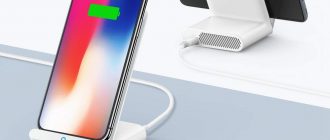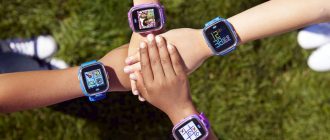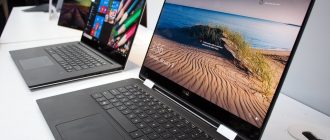
Tablets are not developing at the same pace as mobile phones. Smartphones with large displays take on some of the tasks previously relied on tablets. But the developers of the latter are trying to surprise consumers by releasing hybrids that transform into laptops. Tablets are still in demand in the field of education, for teaching and entertainment of children, and for creating content (drawing). The rating presents the best inexpensive good tablets today, as well as the most powerful models with a high-quality screen and good battery life.
Go directly to the tablet rating =>
Which tablet to choose and buy?
When choosing, focus on the scope of application, so it is easy to determine the technical characteristics of the device.
Screen diagonal
The size of the display depends on the tasks you are using the tablet and personal preference.
- 7-9” - an economical and inexpensive accessory that is convenient to hold with one hand and take with you. It is recommended to buy for children.
- 9,6-11” - the most popular devices occupying an intermediate niche between laptops and smartphones are replacing netbooks.
- From 11 " - massive devices for entertainment and professional activities, usually come with a stylus.
The refresh rate of the display of gaming models is 90 or 120 Hz. Bonus - the presence of a game mode. The screen can be anti-reflective and oleophobic.
Resolution
Resolution depends on the size of the screen and affects the clarity of the picture.
- For 7-8-inch displays, HD-resolution is relevant, for the cheapest models - HD-Ready.
- For devices with a diagonal of about 10 "- FullHD (1920 × 1200 px).
- If you need a tablet with a diagonal of 11 ”or more - take with a QXGA resolution (2048 × 1536 px).
Screen manufacturing technology
Determines the quality of the image.
- AMOLED (Super-AMOLED) - based on organic LEDs. They demonstrate enviable contrast, saturation and variety of colors, high brightness. They are distinguished by their high cost.
- IPS is the most widespread technology - liquid crystal. They consume a lot of electricity, but they are distinguished by a realistic picture, natural colors, and large viewing angles. Low contrast and, as a result, not a full-fledged black (rather, it is gray) color, highlights on the edges are the disadvantages of IPS matrices.
- TN + Film is the cheapest and dying technology due to high power consumption, poor picture quality and viewing angles.
CPU
"Brain", the computing center of any device. It is implemented as a crystal with a graphics chip, controllers, memory, coprocessor and network modules. Look at:
- The technological process of production. The lower it is, the faster, newer and more economical the device will be. Most of the current chipsets are manufactured according to the 12 and 16 nm process technology. If you need a cheaper tablet, a device based on a SoC made using a 20-28 nm process technology will do. The newest tablets are manufactured using a 7-10 nm process technology - they are more powerful and energy efficient than previous generations of devices.
- The number of cores, their frequency. The market is flooded with models with four cores, dual-core processors are practically not used. Eight cores make sense if you buy a working tablet for many years, although after 2-3 years it may become outdated without loading all cores with calculations. Their performance and autonomy of the gadget depend on the frequency.
Other criteria
Be sure to consider:
- RAM - stores intermediate calculation data, affects the performance of the tablet and the number of applications running simultaneously.For surfing, drawing and watching videos, 2 GB of RAM is enough, for comfortable work and games - 3-4 GB. With an unlimited budget, you can take it with 6-8 GB of RAM, but its volume for the Android platform is still excessive, unless the most demanding games will cause discomfort in the next 2-3 years.
- Built-in memory stores applications, movies, games and other files. Usually about 80% of the indicated volume is available (the more it is, the higher the percentage). On Android (on average), out of 64 GB in the specification, the user is given about 48 GB. Support for a memory card and its maximum size are relevant.
- Communication - availability of 3G / 4G and Wi-Fi modules. The latter is everywhere, while the former and the SIM slot are the prerogative of individual models, they are relevant when traveling, traveling, living in the private sector.
- Battery capacity - the classic works: "more is better", but autonomy depends on many factors: hardware, optimization of software and hardware, type and brightness of the display, etc. You will have to play on the tablet mostly near the outlet. A 5,000mAh battery can power a 10-inch device all day long.
- Stylus - will simplify management in individual cases, increase the accuracy of drawing, handwriting text input.
- A pair of Dolby Atmos-enabled speakers deliver surround sound.
- Laptop transformation functionfor example DeX devices from Samsung.
- Input device support - gamepad, mouse or air mouse, keyboard.
- Body material - plastic or metal. The latter gives strength, rigidity to the device, looks more prestigious.
Most tablets run Android, but iOS models find their customers - optimized, bright and Windows - inconvenient for finger control, not replete with a variety of software like Android.
Cameras in tablets, as a rule, are mediocre, and are only suitable for transferring general plans, photographing documents and video communication.
Be sure to check out the presented tablets - a huge number of users rated them positively! And numerous tests have shown that tablets are the best for their money among their own kind.




